This is the fifth in a series of articles on the 2010 San Francisco International Film Festival, held April 22-May 6.
What makes a film or any other work of art especially memorable?
The question is almost impossible to answer in the abstract, except in very general terms: highly developed form and content … an ‘important’ idea ‘importantly’ worked out … language, shape or color ‘charged with meaning to the greatest degree,’ and so forth.
Complicating matters, art work is carried out at a given historical and social moment, which generates its own cultural and psychological atmosphere. Films or novels or paintings that address big questions facing humanity with aesthetic and psychic intensity cannot be cultivated according to a schedule, like vegetables.
There are conditions in which, for a variety of reasons, artists find it difficult to make their way to substantial problems and the most fruitful means of treating the latter. Where the historical continuum seizes the artist when he or she sets to work—during a rising tide of popular discontent and disaffection, at a dramatic moment of defeat and discouragement for the cause of social progress, or in the midst of stagnation and generalized opportunism—counts for a good deal.
The artist is especially susceptible, for better and worse, to the concrete, sensuous realities of the time. As Marxists have emphasized, the artists are not especially adept, on the whole, at anticipating the future. Spinning out visions of an ideal life is not their function. Artistic truth is largely concrete, sensuous truth—at its best, indelibly so.
A critic of ours says, “You’re always mouthing off about contemporary filmmaking—what do you think writers and directors should be doing?” We might answer: exploring contemporary life in the richest possible manner, with a particular eye to the circumstances that have given rise to our present situation.
As we’ve argued many times, if film writers and directors on a global scale are demonstrably not doing that, it suggests that the source of the difficulties lies outside cinema. If films from Iran, Germany, Palestine, Belgium, Mexico, South Korea, the US and China exhibit some of the same “smallness,” some of the same passivity, some of the same aversion to tracing out phenomena historically, we must be faced with an objective, social problem.
From Iran …
The White Meadows and Frontier Blues are recent films from Iran. The first is directed by Mohammad Rasoulof (Iron Island), who was recently jailed for a time by the reactionary clerical Iranian regime, along with fellow director Jafar Panahi.
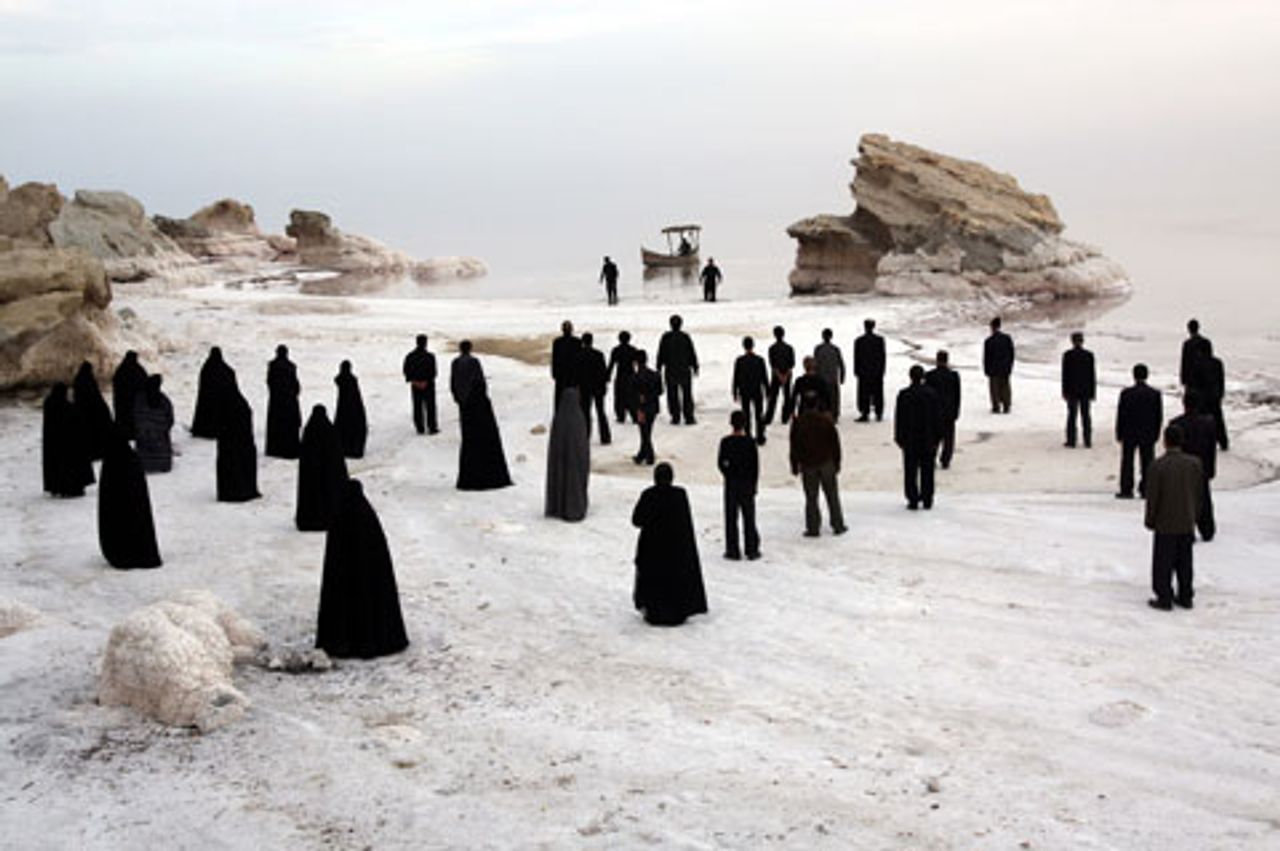 The White Meadows
The White Meadows
In the strongly allegorical film, an aging boatman navigates along the shores and among the islands of Iran’s Lake Urmia, the largest lake in the Middle East and the third largest saltwater lake on earth. His job in the small communities where he lands is “to listen to people’s heartaches and take away their tears.” Quite literally. He collects teardrops in a bottle.
Everywhere there are such heartaches, and bizarre, painful situations. In one village, a girl is being sacrificed to the sea because she is “too beautiful to live among us,” in another, a dwarfish man is disastrously lowered into a fairy’s well with bottles of tears attached to him, in a third, a painter is being told to paint the sea blue as per official command. One tiny island is nothing but a prison, where the warden, looking like Robinson Crusoe, has been isolated for years.
A state of general misery prevails, without any hope of relief. Attempts at escape seem futile. Some of the images are convincing, heartfelt. Who is to blame for all this? What’s to be done?
The authorities, unseen, are repressive and feared. But one is left after a number of sequences with the impression that much of the fault lies with the people themselves, who are often backward, prone to superstition and cruelty. Economic suffering is not at the heart of the film.
Given Rasoulof’s arrest and presumed sympathy for the Green opposition movement, it cannot be coincidental that the scene done with the most feeling, by far, is the one involving the persecution of the artist. The painter is being hounded, for his own good, by his brothers, who are concerned about what will happen to him if he continues to act in an unorthodox manner, painting the sea red and such.
They complain, “His eyes are bad, so he paints badly … He sees everything wrong, but doesn’t realize it himself.” They force him to climb a ladder sticking straight up out of the lake and stare at the sun, until it blinds him. “Just say it’s blue [the sea] and give us rest! It’s to your advantage to say it’s blue.”
The message about repression and conformism is real and legitimate, but unless that concern is allied to an understanding of the social dynamics in Iran and globally, it can lead in all sorts of directions. Any number of nefarious Western ‘friends’ will offer to ‘liberate’ Iran from its present condition, in order to substitute one just as enslaving. So, the film only half-convinces …
(At least Rasoulof expresses some genuine concern for the general population. In France, middle class self-involvement takes on a far more irritating shape in Jacques Rivette’s Around a Small Mountain. The veteran director’s treatment of a relationship between an Italian traveler and a former high-wire performer strains one’s patience. Perhaps Rivette is mocking the latter character, played by Jane Birkin, but one fears not. Her single-minded orientation toward her own past traumas and other very trivial matters is insufferable. One simply doesn’t care very much about any of these people.)
(Morning, directed by Leland Orser, and starring his wife, Jeanne Tripplehorn, and Orser himself as an anguished couple who have just lost a child, is self-involved as well. But at least in this case, the painfulness seems sincere and objectively, ‘outwardly’ truthful. Nonetheless, the picture’s scope is very small. All the energy and passion needs to be expended on a far weightier project.)
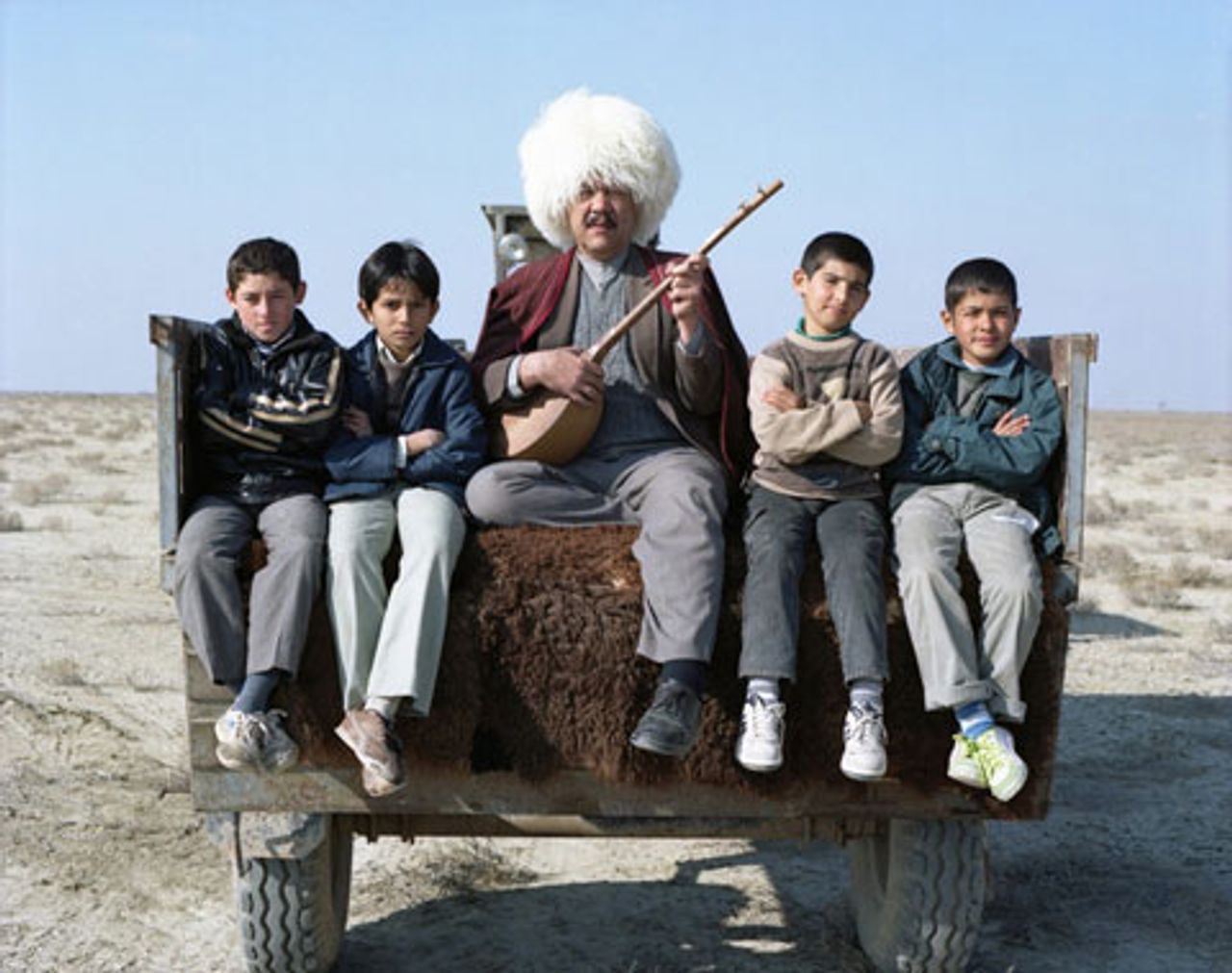 Frontier Blues
Frontier BluesIn Babak Jalali’s first feature film, Frontier Blues, some more of the Iranian discontent finds expression, this time in an understated, comic manner. Set on the country’s northern frontier with Turkmenistan, near the Caspian Sea, the film follows four main characters: Alam, a Turkmen, who works on a chicken farm, loves a Persian girl to whom he’s never spoken, and dreams of learning English and taking her to Baku; a 28-year-old Persian man who lives with his uncle and whose only companion is a donkey; the uncle, who owns a clothing store and sells clothes that never seem to fit anyone; and a 55-year-old Turkmen musician, whose wife ran off years ago.
Tehran is very distant. A photographer from the Iranian capital is trying to capture “realistic pictures” of the musician and a group of his young followers in their “native habitat” and traditions. It’s all fake, down to the big fur hat the photographer makes the musician wear. “Get a horse,” the photographer tells him at one point. “I don’t know how to ride a horse,” the musician replies. “It doesn’t matter,” the other responds, arguing that it’s what people expect of Turkmens.
And so forth. Some of this is pointed, some if it is a little bland. Again, the film goes back and forth—here, between making fun of the population or shedding light on the conditions of life. The filmmaker hasn’t made up his mind yet.
Alam’s courtship of the Persian girl comes to nothing; her parents don’t approve of his economic prospects. At the end, he is back forlornly listening to his English-language tapes: “I am fine … everybody is fine.” Clearly, they aren’t.
A few European and American films
Well-known Turkish-German filmmaker Faith Akin (Head-On, The Edge of Heaven) offers Soul Kitchen, a slight, comic work about a Greek immigrant in Berlin and his problems running a restaurant and sorting out his life. The film is perfectly pleasant, but reveals what one has suspected about Akin: that beneath the histrionics of his earlier films, there were relatively commonplace ideas.
A portrait of the European “revolutionary” counter-culture, My Queen Karo, apparently comes from direct experience. Its director and co-writer, Dorothée van den Berghe, grew up in an anarchist commune in Amsterdam in the 1970s.
In the film, 10-year-old Karo, her mother and father leave more repressive Belgium in 1974, for political reasons, and settle in free-spirited Amsterdam. They live in an open space, with others, who all share food, money and sexual partners. When her father, Raven, the “revolutionary,” brings in another woman, Karo is upset and torn. Raven is portrayed as selfish, egotistical, but presumably sincere in his anti-establishment ways. His credo: “Why did we leave Belgium? To live as we please.”
It all ends badly, of course, with Raven beaten up by the police after a confrontation, and the commune wrecked. Karo learns to make her own way. The film seems accurate enough, but it doesn’t care to shed any great light on a convulsive period.
Littlerock (directed by Mike Ott) is a small study of a Japanese brother and sister stuck in the small California town, north of Los Angeles, named in the title. The girl, Atsuko, decides to stay a few days while her brother goes on to San Francisco. She has a romance with one local boy, although another pines for her. The festival catalog praises the film’s ability to catch the “languid rhythms of purposeless young people, drinking and smoking their days away.” A bit too well.
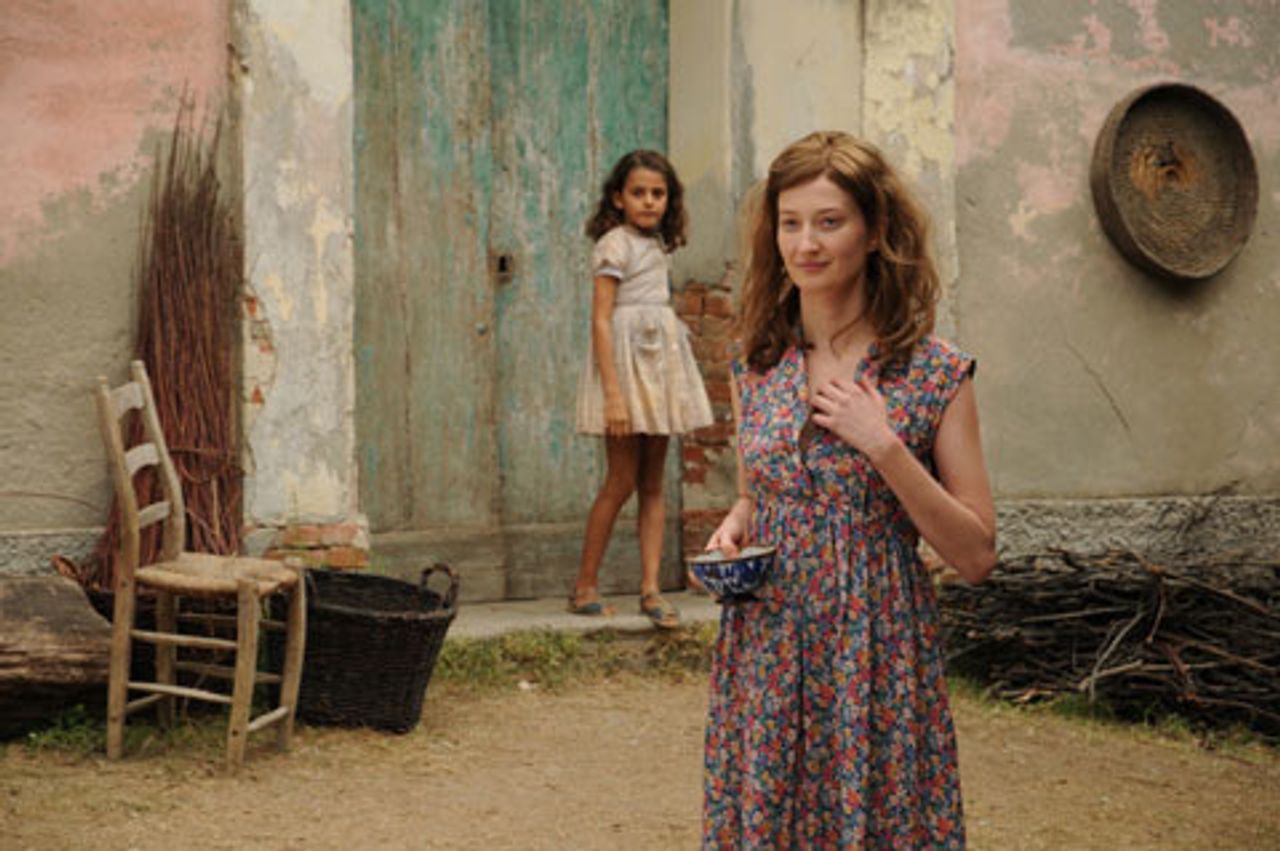 The Man Who Will Come
The Man Who Will ComeFrom Italy, The Man Who Will Come is a sincere re-enactment of a massacre carried out by German Waffen-SS troops in the waning days of World War II. In retaliation for local support for the anti-fascist resistance, the SS force executed hundreds of mostly elderly men, women and children, nearly 800 by most accounts, in villages surrounding Monte Sole—in the Apennine mountains south of Bologna—in September-October 1944.
Director Giorgio Diritti tells his story through the eyes of a young peasant girl, Martina. Her mother is expecting a baby. Martina stopped speaking when her newborn brother died in her arms years ago. She awaits the new child with anxiety. Meanwhile, the military conditions, including significant attacks by partisans on the German forces, are leading to a climax.
Diritti writes that his work “is a film about war as seen from below, from the perspective of those who suffer, the simple folk who unwittingly find themselves caught up in the great historical events that seem to forget the lives of common people.” It is an honest, serious effort, but not inspired. Whether the missing ingredient is greater social urgency or artistic skill, The Man Who Will Come does not make as deep an impact as it should.
If it is not the last word in a type of inert “realism,” Yellow Sheep River from China is right up there. We are witnesses to various aspects of daily life in a small Chinese village, sheep-raising, harvesting and milling grain, making bread, etc. The festival writes that “Director Liu Soung leaves behind many of the conventions of documentary filmmaking”—yes, such as commentary, critique, narrative, social insight. This won’t do.
Films from the Middle East
The Middle Eastern population’s suffering was the subject of a number of films at the San Francisco festival. In this region bedeviled by imperialism, the camera is almost obliged to record the inhuman social conditions and brutality of the authorities.
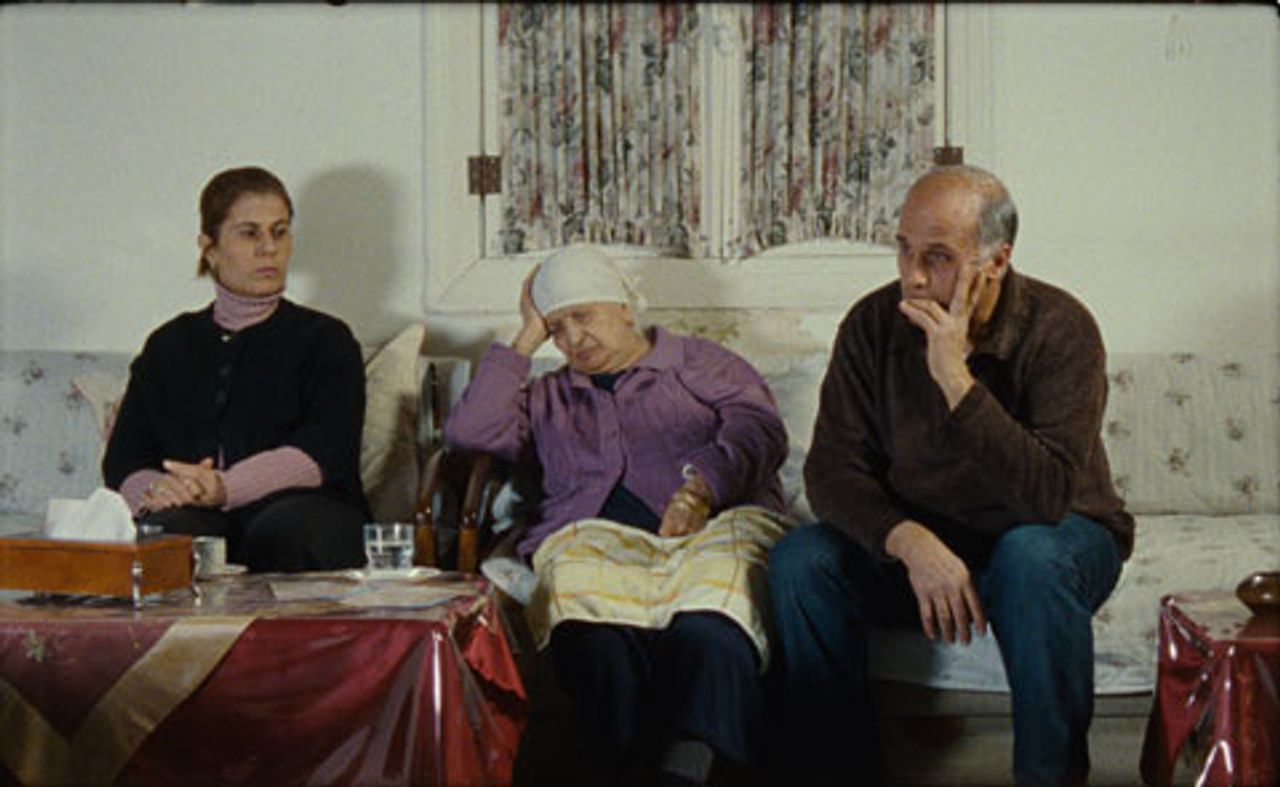 Port of Memory
Port of MemoryFor ideological and political reasons, crystallizing this complex reality is demanding. Added to that are the difficulties of operating in conditions of political repression. These combined challenges may help explain the limitations of films such Port of Memory and Son of Babylon, which, in general, communicate an air of passivity. The latter, an Iraqi film that attempts to promote a message of “national unity” and “forgiveness,” treads in murky political waters.
Port of Memory by Israeli-born Arab director Kamal Aljafari was filmed in the ancient port city of Jaffa in Israel. Salim, a Palestinian, and his family are being evicted from a house that’s been in the family for 40 years. They are also being fined for “squatting,” as their neighborhood is being taken over by the Israelis. Caught in bureaucratic limbo while his situation is being resolved, Salim walks the streets lined with boarded-up and crumbling dwellings. There are signs of protest: his sister finds leaflets that proclaim—“We won’t leave.”
Salim’s resignation seems total, empty of defiance. If one thinks the best of this quiet, elegant film, it brings to mind a Pasolini poem: “Passive as a bird that sees all, in flight,/ and carries in its heart,/rising in the sky, an unforgiving conscience.”
Two weeks after the fall of Saddam Hussein in 2003, 12-year-old Ahmed and his grandmother travel from the mountains of Kurdistan to the sands of Babylon to find the boy’s father who has been missing since the 1991 Persian Gulf War in Son of Babylon by Iraqi filmmaker Mohamed Al-Daradji. Their journey is prompted by the discovery of a new mass grave.
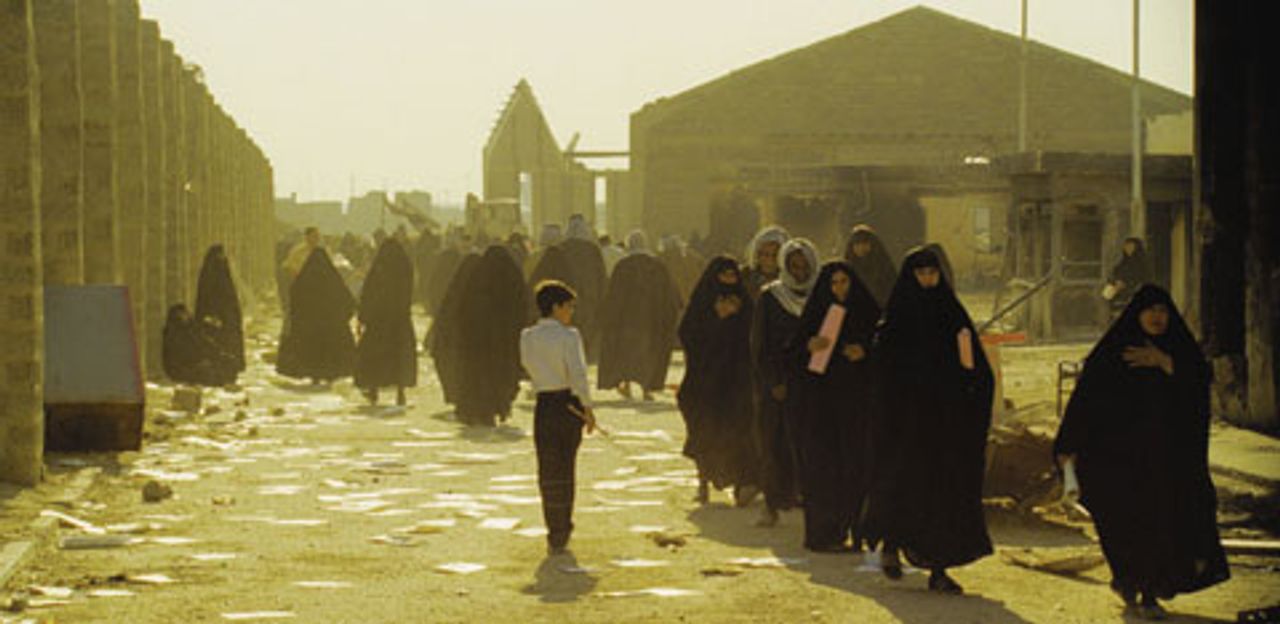 Son of Babylon
Son of BabylonThe director states: “The first mass graves uncovered in Babylon hundreds of thousands of bodies, yet in the wave of chaos and occupation that hit Iraq during this time the majority have remained unidentified and forgotten.” While the US occupation forces are not counterposed favorably to Hussein (“Saddam is a bastard and the Americans are pigs”), the film seems to be saying ‘forgive and forget’ in regard to the communalist bloodletting and implies that US imperialism has had nothing to do with the process.
However, any serious investigation of Hussein’s atrocities against the Kurds, such as the Anfal campaign of mass killings in 1987-1988 and the gassing of Kurds at Halabja in 1988, would point to the complicity of successive US administrations. Furthermore, a look at Hussein’s suppression of revolts by Kurds and Shiites in 1991 would reveal that the Bush administration, which initially encouraged the uprisings at the end of the Persian Gulf War, came to the cynical conclusion that the continuation of Hussein’s dictatorship was preferable at the time to a collapse of the Iraqi state.
Russian Lessons
Russian husband and wife filmmakers Andrei Nekrasov and Olga Konskaya collaborated on the documentary Russian Lessons, about the 2008 war between Russia and Georgia. Konskaya died of cancer shortly after the film was completed.
As war broke out in August 2008, Nekrasov and Konskaya began filming from the front lines: she from the Northern side and he from the Southern. At the film’s onset, they make clear their view that Russia was the aggressor. Their palpable hatred of Russian president Vladimir Putin is woven into the movie’s fabric. However, the reactionary Putin is replaced in their favor by equally foul elements such as Georgia’s General Mazurka Kurashiki, who are given a platform by the directors.
What the filmmakers obstinately refuse to consider is that driving this military confrontation were major geopolitical interests and ambitions. The war was the product, above all, of increasingly aggressive policies pursued by US imperialism, including the systematic manipulation of national conflicts in the region, in the wake of the dissolution of the USSR in 1991. The film’s wrong-headedness makes it hard to watch.
Mexican attorneys Layda Negrete and Roberto Hernández, another husband and wife team, helped create a 90-minute exposé, Presumed Guilty (directed by Hernández and Geoffrey Smith), on the corruption of Mexico’s justice and penal system, which has a 95 percent conviction rate. Negrete and Hernández used their movie and other efforts to campaign for judicial reform in Mexico.
An article attached to the film’s production notes explains that in June 2008, Mexican President Felipe Calderón signed a constitutional amendment, which Negrete described as “a very strange combination of Patriot Act and very liberal human-rights pieces.” It is the height of political naiveté, however, to think that the venal ruling establishment will change its practices at this point in history based on a piece of paper.
In Mexican director Pedro González-Rubio’s Alamar, a young man of Mayan descent and his son blend with nature and bond with each other at Mexico’s Banco Chinchorro, part of the world’s second largest barrier reef, before the boy and his mother move to Rome.
The director wanted to develop a story that raised “environmental awareness…The destruction of an extensive coral reef to make a long dock for cruise ships, the destruction of hectares of mangrove along the coastline to build big chain hotels, polluting the sea with sewage water, hence affecting the whole ecosystem of the area and pushing many of its species to an ill-fated future.”
It’s a lovely, fetching film, but showing the Mayan “ancestral interaction between man and nature” is not sufficient as a protest against the destruction of the environment.
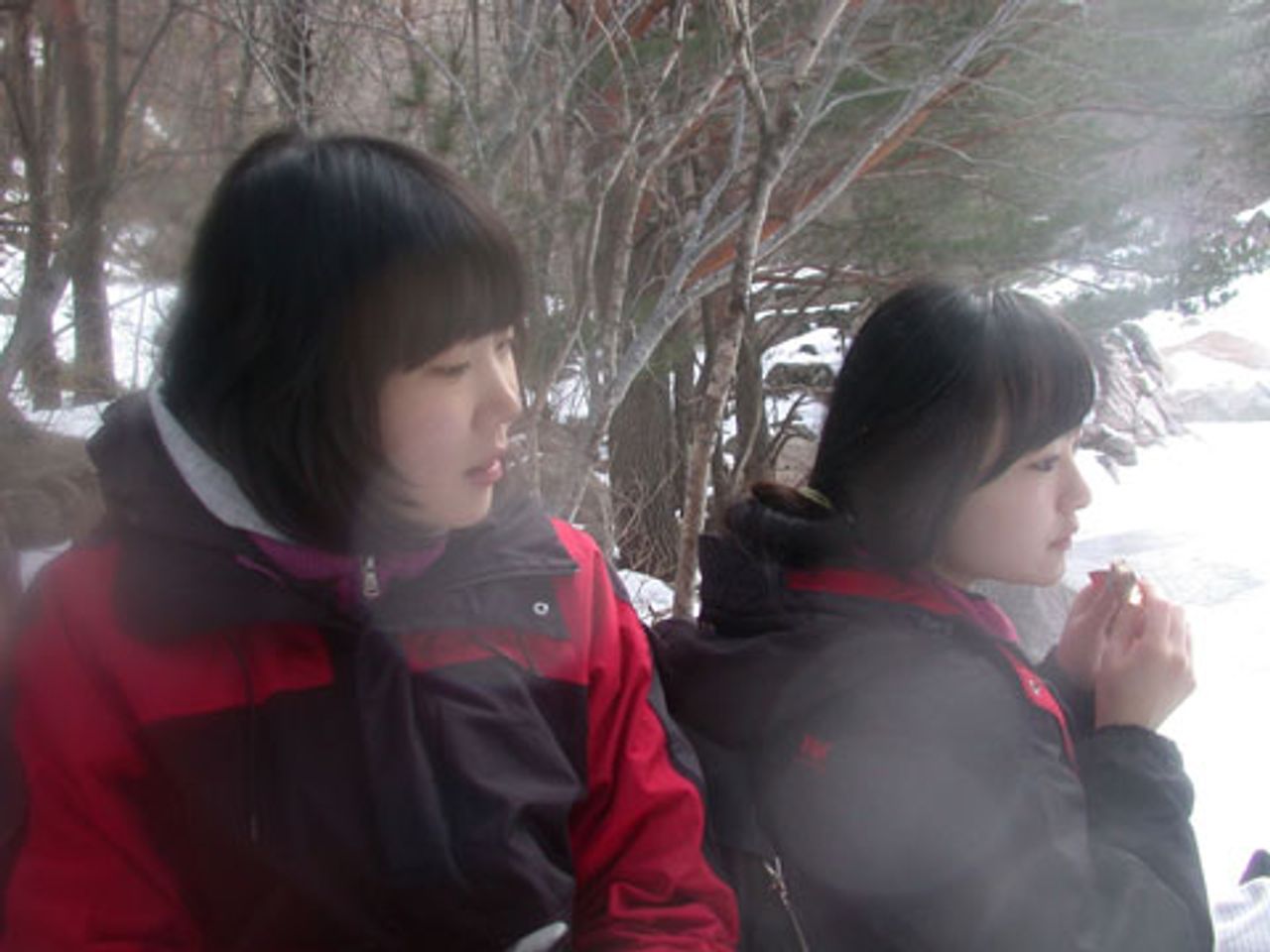 Moscow
MoscowSouth Korean director Wang Cheol-mean’s Moscow opens with a group of women on a labor hunger strike. One of them, Jin-hee, mentally and physically depleted, walks off the protest site. She ends up staying with childhood friend, Ye-won, who has achieved a certain success working in an office in Seoul. Their contrasting experiences and social backgrounds form the main plank of the film’s fairly simplistic narrative.
Although Moscow is dedicated to fired women workers at Kiryung Electronics, who have been fighting management since 2005, Jin-hee’s activism seems oddly incidental to the movie. Instead, the critical reference point is Chekhov’s Three Sisters, in which the frustrated and unhappy protagonists long for a Moscow that exists in their imagination. Likewise, says Wang in the movie’s production notes, Jin-hee and Ye-won “can become one if they return to their childhood dreams.”
The two women are appealing, and have some pleasing moments together, but the director’s theme seems slight in the extreme.
To be continued
